Dawn at Cable Airport (CCB) in Upland, California. Light winds from the east, 4 knots, clear skies, and good visibility. A Beechcraft P35 Bonanza, N8572M, lines up on Runway 24 and accelerates. Moments after liftoff, the nose keeps rising—too much, too soon. A witness sees the left wing drop, the airplane snap into a spin, and then disappear behind the hangars. Seconds later, impact and fire at a hangar doorway on the south side of the runway. Three lives lost.
Who Was Flying and What They Brought to the Cockpit
The pilot was 64 years old, a private pilot with airplane single-engine land. No instrument rating, no instructor certificates. His logbook wasn’t recovered, but the most recent numbers on file show about 175 total hours, and—critically—0 hours in the Beech P35 make/model. His last medical was a third-class in 2007; it had long expired by the time of this flight. Early toxicology later found a trace of ethanol likely consistent with postmortem production and not impairment. The autopsy also noted heart disease that increased the risk of a sudden event but couldn’t confirm one occurred. From an operational standpoint, the NTSB found no preimpact mechanical failures; propeller and engine signatures were consistent with power at impact. That all narrows the causal picture to one thing: control.
The Takeoff That Got Away
Airport surveillance captured the whole arc: a pronounced nose-high climb, then the classic break—left wing drops, nose falls through, and the airplane rolls over into a spin. The witness estimated the angle of attack as 30°–45° nose-up. That’s not an airplane gently pitching for Vy; that’s a high deck angle flirting with the critical angle from the second the wheels left the asphalt. The Bonanza clipped a hangar roof and came to rest inverted at the hangar threshold. Post-impact fire thermally destroyed much of the fuselage. Control continuity was established; elevator trim was around neutral; the left flap actuator corresponded to flaps up, matching the witness account that the flaps looked retracted. The fuel selector was found OFF post-accident, but moved freely and could have been bumped in the breakup—nothing here screamed fuel starvation on climbout, and the engine showed power. On a morning with mild density altitude and light winds, this airplane should’ve had a routine departure. It didn’t.
Environment: Not the Culprit
We always ask if the air mass ambushed the pilot. Not this time. At 0630 local, CCB reported clear conditions, 9 miles visibility, temperature 23°C with a 17°C dew point, and altimeter 29.91. Wind 090 at 4—so a small left crosswind and a touch of tailwind component if anything, given a Runway 24 departure, but not a showstopper on a 3,863 x 75 ft runway. No turbulence forecast or observed. No precip, no ceiling. This wasn’t a gusty shear morning that bites you on rotation. The bite came from pitch and energy management.
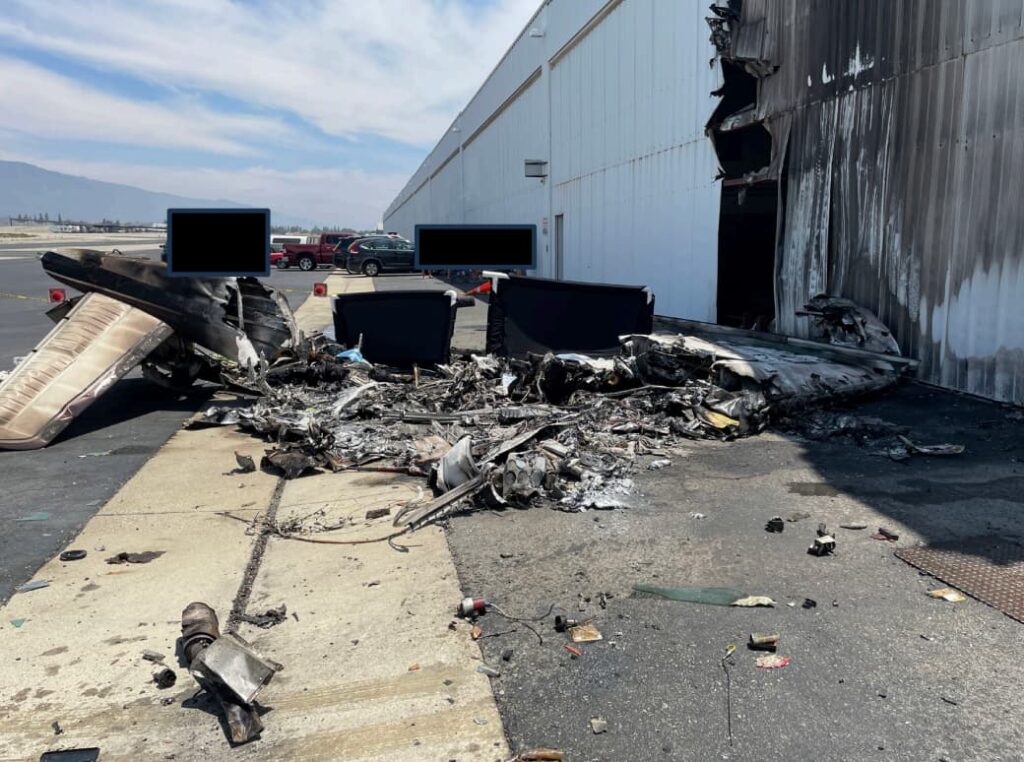
Aircraft and Setup: What We Know (and Don’t)
The Beech P35 is a fast, retractable-gear, 260-hp IO-470-N Bonanza. It’s a capable traveler with crisp handling—and a wing that, like any wing, stops flying once you exceed its critical angle. Logbooks weren’t available, so we don’t have the last inspection or recent maintenance picture. Local mechanics reported they hadn’t worked on the airplane. Control runs showed continuity through the burn. Prop blades showed leading-edge nicks, chordwise scratching, and S-bending—classic power signatures. Put simply: the airframe and engine were game to fly; the departure profile wasn’t.
Human Factors: Experience, Proficiency, and the Nose That Keeps Coming Up
This is where the story feels familiar to a lot of us who’ve transitioned airplanes. The pilot had 175 total hours and none logged in the P35 make/model. A Bonanza isn’t a “gotcha” airplane, but it is heavier, faster, and more pitch-responsive than many trainers. With a retract and a constant-speed prop, the noise and acceleration cues can lure you into an oversquare deck angle if you’re behind the airplane. Combine unfamiliar sight pictures with the natural urge to clear rising terrain off the departure end and you have the ingredients for a high angle of attack right after liftoff. Once the left wing stalls first—whether from yaw, crosswind correction, or a touch of left-turning tendency not countered—the break is sudden and unforgiving at 300–400 feet AGL.
Now add two passengers in a four-seat retractable at dawn, potentially a slight tailwind from the east, and what might be a heavy takeoff weight. None of those are causal alone, but they’re performance taxes. At that height, you don’t get a second try. The hangars at Cable sit close to the runway; the margin for a wings-level stall recovery was nearly zero.
The NTSB’s Bottom Line
The Board called it straight: the pilot exceeded the airplane’s critical angle of attack for reasons undetermined, stalled, and impacted a building. That language matters. There’s no boogeyman in the fuel system, no hidden gremlin in the magnetos. This was an energy-and-attitude loss of control in the most vulnerable phase of flight.
What the Video Teaches
Many of us pitch visually more than we’d admit. On takeoff, we’re chasing a deck angle, not strictly an airspeed. In a new airplane, especially one with a sleeker cowl and different sight lines, your “that looks about right” can be dangerously high. The video sequence here shows a pitch that just keeps coming up. The engine’s making power, sounds healthy, and the airplane answers with climb—until the wing says “no more.” The left wing drops, the nose slices down, and the Bonanza corkscrews out of sight. That’s textbook departure stall/spin. Once you’re there, the combination of low altitude, high drag, and disorientation closes the door.
Safety Debrief: What We Can All Do Differently
- Fly the airspeed, not the sight picture—especially in a new type. Before you taxi, brief target speeds out loud: rotate, initial climb, and obstacle clearance pitch cues. If the POH is missing (as sometimes happens with a used airplane), stop and get the data. A Bonanza-class machine will not forgive casual pitch.
- Guard against the “new-airplane bump.” Zero time in type is a big yellow caution flag, even for rated pilots. Take a CFI who knows the model. Two or three circuits to calibrate pitch, trim, and power will reset your sight picture and teach you what a normal Vy climb looks like from that cockpit.
- Crosswind and torque management from the first inch of climb. Early rudder is cheap insurance. A small uncoordinated yaw can cue the low wing to stall first. Keep the ball centered; fly it with your feet.
- Brief the “no-go” cues. On my own departures, I’ll say it out loud: “If the nose keeps rising and I’m not accelerating through Vr/Vy, lower it now.” That preloads the mental spring to push—not pull—if something feels off.
- Proficiency over paperwork, but don’t ignore the paperwork. A lapsed medical doesn’t tell us whether a cardiac event occurred here, and the NTSB couldn’t prove one. But medical readiness is part of aeronautical decision making. Treat it like weather: if it’s fuzzy, delay and get clear.
- Consider runway environment. Cable’s hangars are close. That’s not a scare tactic; it’s a reality that demands conservative technique—especially early morning with passengers. If you’re heavy or uncertain, pick the most favorable runway for winds, and be strict about pitch and airspeed right off the ground.
Wreckage Signatures That Corroborate the Picture
Investigators found the fuselage burned but control continuity present; the elevator trim near neutral; left flaps retracted; and the engine/propeller damage consistent with power. One prop blade showed S-bending, chordwise scratches, and leading-edge nicks—classic powered-impact marks. The nose gear and a chunk of the prop hub ended up embedded in the hangar door frame, with the left wing on the roof. That spatial layout—impact at the doorway with pieces inside the hangar and on the roof—lines up with a descending, nose-low, left-wing-down attitude at contact. It’s the geometry of a stall/spin on short final…only this one happened right after takeoff.
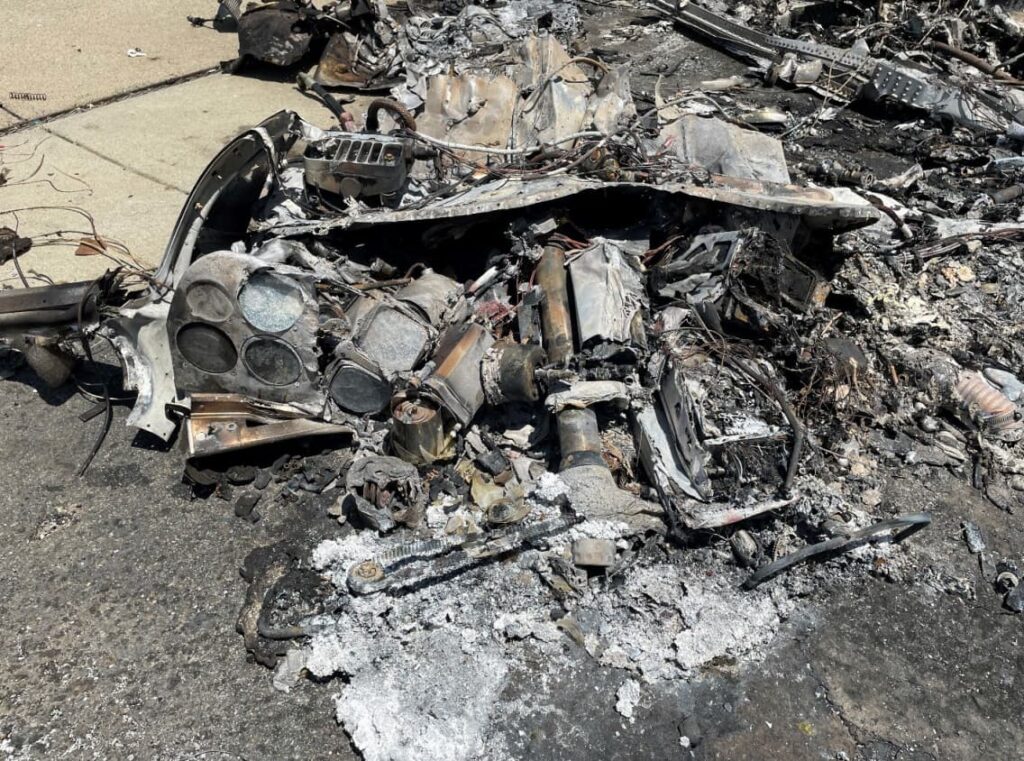
Closing Thoughts
There’s no hero edit for this kind of accident—only respect for the lives lost and a hard look at our own habits. The Bonanza didn’t quit. The morning air didn’t ambush the flight. A steep deck angle, an unkind sight picture, and maybe a touch of uncoordinated yaw stacked up in seconds. The fix is mundane and unglamorous: chair-fly your numbers, take instruction in type, and be ruthless about energy management on departure. If the nose keeps coming up, push. The runway environment at Cable gave this pilot almost no room for error. That’s the kind of lesson we have to learn in the briefing room, not in the first 400 feet.

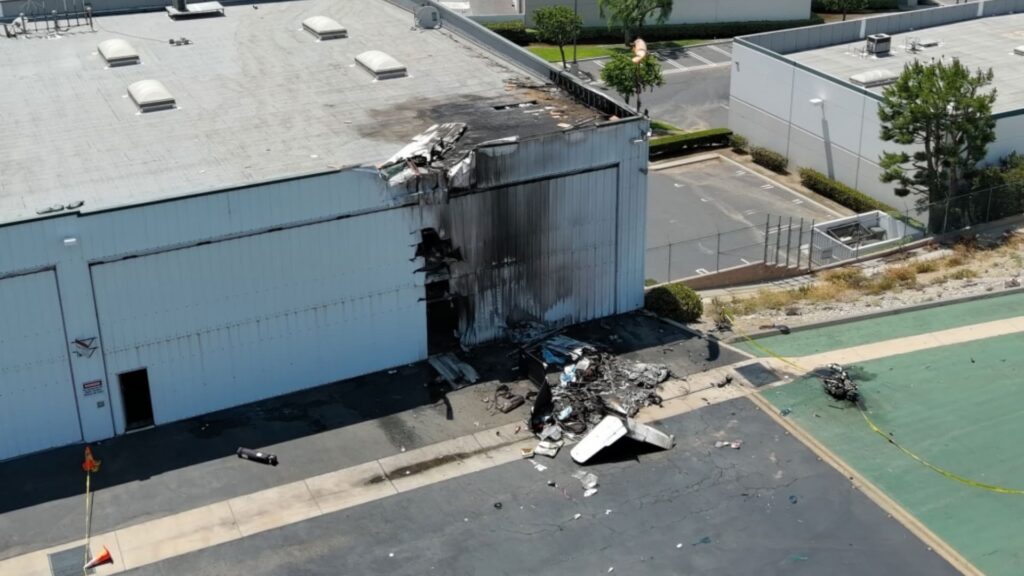



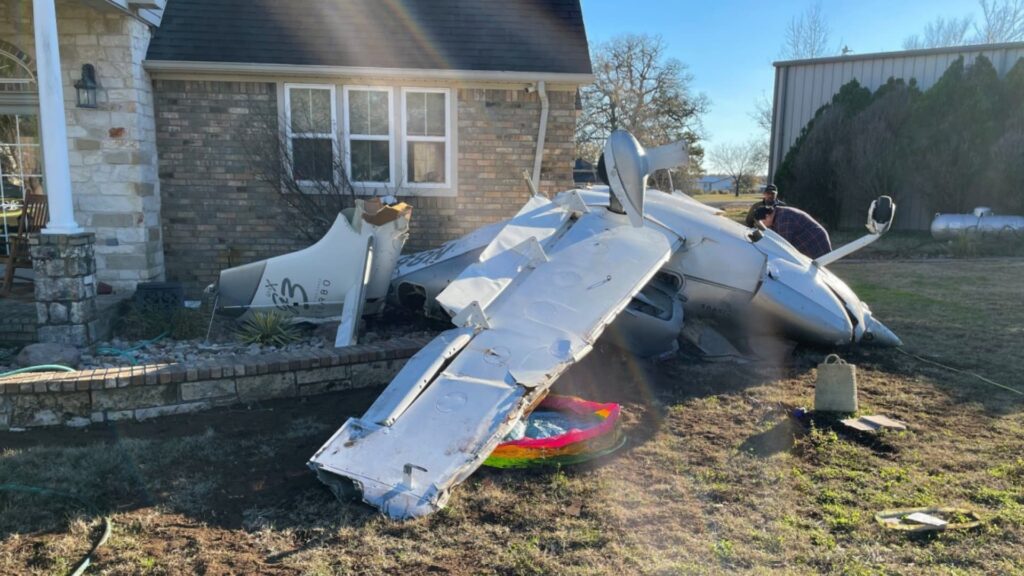
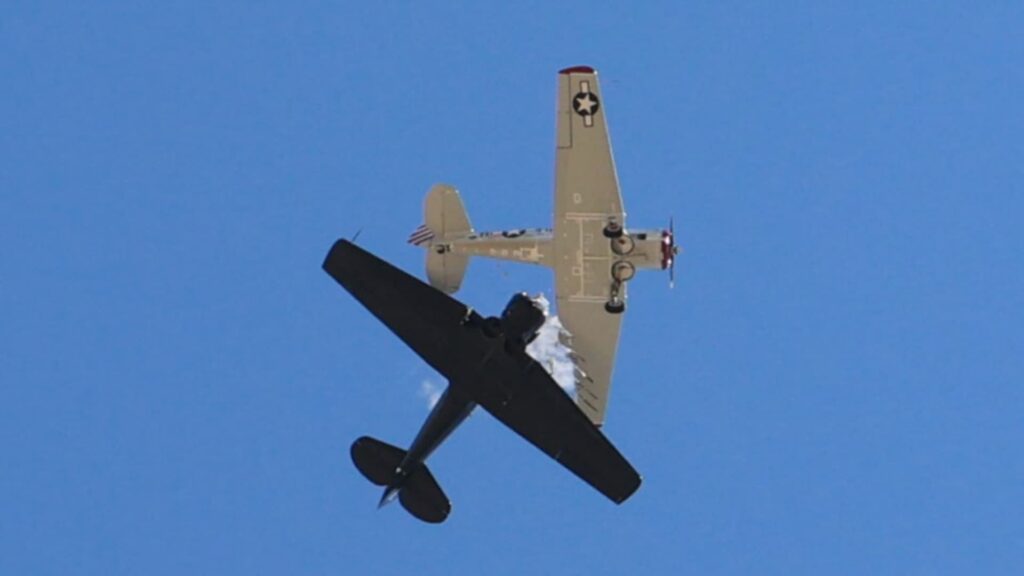
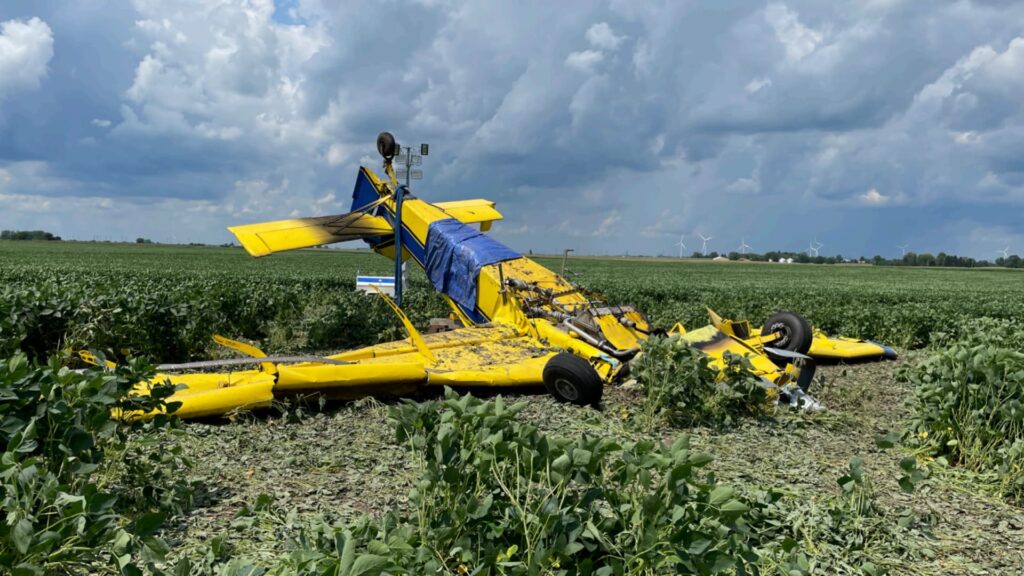

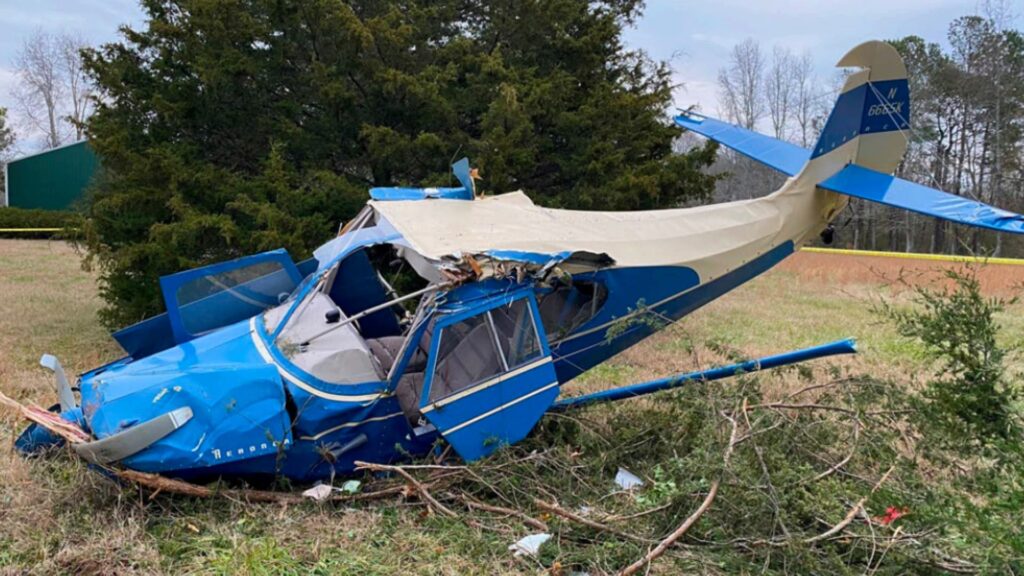
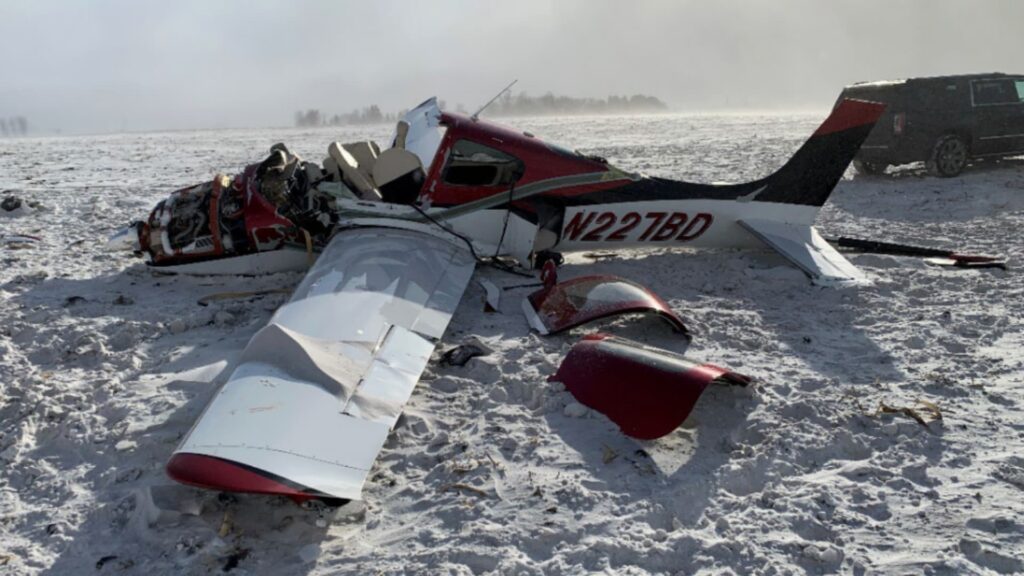
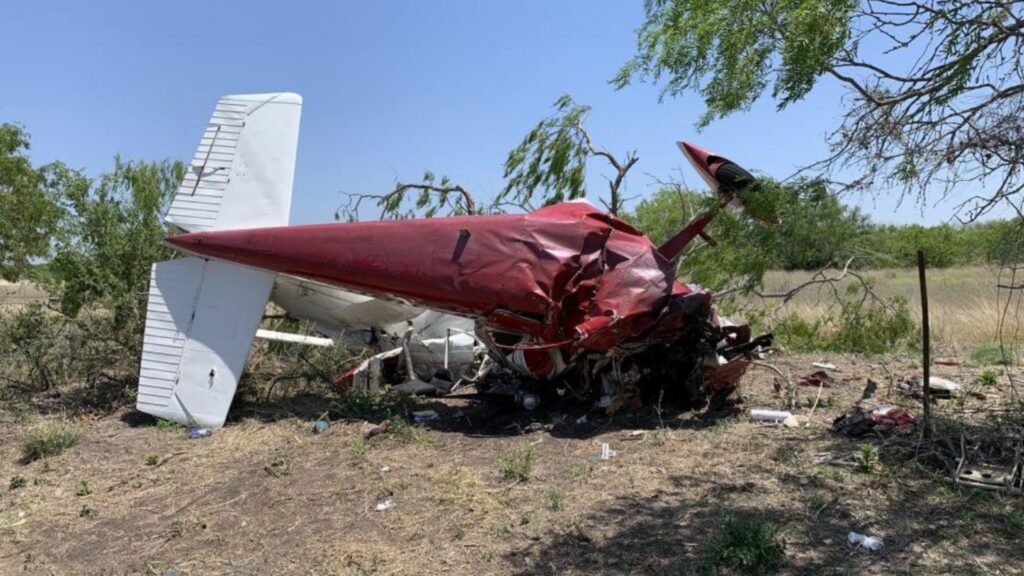

3 Comments
That video was terrifying. Those poor people had a bit of time to realize they were going to die. So tragic and sad.
Tragic. What was the safety saying,”Read the dash one before you splash one.” Sight pictures on takeoff can have bad outcomes but following the numbers leads to happy landings where sight pictures are ok. Lineup, Meatball, Angle of Attack.
Very sad. The Bonanza is an outstanding aircraft. I’ve personally flown the K35 and M35 models. It performs beautifully, as advertised. BUT. It is not a just get in it and go without proper training aircraft. Easy to fly? Yes, as long as you fly it by the book/numbers. Safe to fly? Absolutely, as long as you fly it within its design limitations. One goes “fooling” around in a Bonanza, without proper training or flying it recklessly even with proper training, it’ll bite you and leave a scar.